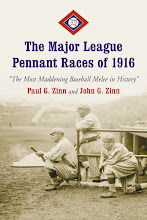
While I prefer to make up my own titles for posts, in this case I am borrowing the title from the Virginia conference panel discussion because I think it best describes the issue. As I wrote in the last post, the second morning workshop was about Virginia and the south in 1859. About one-third of the discussion focused on the slave trade in Richmond and while the panelists eventually moved on to other topics, for me the morning ended with this sense of the omnipresence of slavery, and the perhaps even more depressing thought that few, if any, thought it was wrong. And that those who did think it was wrong couldn't or wouldn't do anything about it.
Enter then for the first afternoon session, a discussion about John Brown, someone, who has title suggests, we have a hard time understanding. On the one hand, Brown brutally murdered five slaveholders in Kansas during the struggles over whether that state would be slave or free. Then at Harper's Ferry in October of 1859, he launched a raid on the Federal Arsenal designed to free slaves and steal weapons and ammunition for further attacks. Apparently Brown's original plan was to stay at Harper's Ferry only long enough to accomplish those two objectives and then retreat back into the mountains to begin a series of terrorist attacks on slaveholders. For some reason, Brown did not follow his original plan and stayed long enough for Federal and state authorities to capture or kill the entire party.
Looked at from that perspective Brown was a cruel murderer as well as a traitor who took the law into his own hands. Yet at the same time, Brown was someone who had committed his life to do something about a monstrous evil, an evil that most people were willing to ignore or at the very least accept. Given that situation it is hard to understand how slavery could have been ended without violence or war. There was some speculation in the discussion that Brown decided to stay at Harper's Ferry because he felt that he could best serve the anti-slavery cause by being a martyr to it. Supposedly between the time of his capture and his execution, Brown wrote over 100 letters designed in large measure to bring attention to the evil of slavery and the need to do something about it. One question raised in the discussion that was never answered was why did the state of Virginia allow him to send all those letters that gave more ammunition to the abolitionist movement.
Perhaps the real difficulty in making sense of John Brown lies in the question of whether it is ever legitimate to use violence to fight evil. Some of Brown's contemporaries who usually thought otherwise seemed to think it was appropriate in this case. For example, Henry David Thoreau, one of the leading proponents of civil disobedience and pacifism supported Brown's actions. Still no matter, how great the evil, even if violence is the only solution, it seems hard to justify taking the law into one's own hands. And yet, it is hard to see how slavery would have been ended without war - certainly nothing in 1859 suggested there was any other alternative. It is a question that may very well be unanswerable suggesting why 150 years later, it is still so difficult to make sense of John Brown



No comments:
Post a Comment